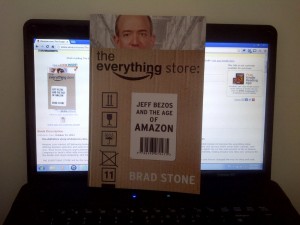“Shoe Dog” is a memoir written by Phil Knight, the co-founder and former CEO of Nike. The book provides an inside look at the early days of Nike and Knight’s journey from selling shoes out of the trunk of his car to building one of the most iconic and successful sports brands in the world. It is a compelling story of perseverance, entrepreneurship, and the challenges faced by Knight and his team as they navigate the competitive and ever-changing world of sports footwear.
In the book, Knight shares several key milestones and pivotal moments that shaped Nike’s growth:
- The founding of Blue Ribbon Sports: In 1964, Phil Knight and his former track coach, Bill Bowerman, establish Blue Ribbon Sports, a shoe distribution company. Knight begins by selling Japanese running shoes out of his car, laying the foundation for what would eventually become Nike.
- The transition to Nike: In 1971, Blue Ribbon Sports rebrands itself as Nike, inspired by the Greek goddess of victory. The company starts manufacturing its own shoes, starting with the iconic Nike Cortez, and begins to gain recognition and popularity in the running community.
- The Air Jordan collaboration: In the mid-1980s, Nike faces financial challenges, but a collaboration with basketball superstar Michael Jordan turns the tide. The launch of the Air Jordan line revolutionizes the sneaker industry, propelling Nike to new heights and establishing a powerful brand association with top athletes.
- Going public and global expansion: In 1980, Nike goes public, raising significant capital to fund its expansion plans. The company aggressively expands into international markets, particularly in Europe and Asia, solidifying its position as a global leader in athletic footwear.
“Shoe Dog” provides an inspiring and intimate account of the trials and triumphs experienced by Phil Knight and his team as they build Nike from the ground up. It showcases the importance of innovation, determination, and unwavering belief in one’s vision, making it a must-read for entrepreneurs, sports enthusiasts, and anyone seeking inspiration in their own pursuits.
Here are some key takeaways from “Shoe Dog”:
- Persistence: Phil Knight’s story highlights the importance of perseverance in the face of challenges.
- Embrace risk and learn from failures: Knight’s willingness to take risks and learn from mistakes played a crucial role in Nike’s success.
- Strong company culture: Building a strong company culture rooted in shared values is vital for attracting and retaining talented individuals.
If you enjoyed “Shoe Dog,” you may also find the following books relevant and insightful:
- “Pour Your Heart Into It” by Howard Schultz: In this memoir, the CEO of Starbucks shares his experiences and the principles that guided him in building one of the most recognizable brands in the world.
- “The Lean Startup” by Eric Ries: This book offers practical advice for entrepreneurs on how to build and launch successful products by utilizing a lean and iterative approach, minimizing waste, and learning from customer feedback.
- “Start with Why” by Simon Sinek: Sinek explores the power of purpose and provides insights on how to inspire and lead others by starting with a clear understanding of why you do what you do. This book is a valuable resource for understanding the importance of defining and communicating a compelling vision.
These books, like “Shoe Dog,” offer valuable insights into entrepreneurship, leadership, and the challenges faced by businesses on their path to success.



